Painter Julian Cardinal will tell you straight up that he doesn’t like green. “It’s a difficult color to work with,” he says, without a hint of self-consciousness, as if expressing a distaste for asparagus. “It’s an overwhelming color, so I try to stay away from it.”
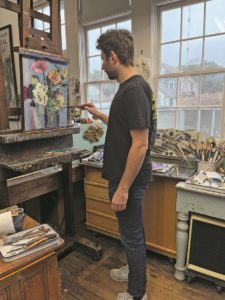
The 33-year-old artist has had plenty of opportunities to consider color, though mostly not as a part of any sort of formal training.
Cardinal is the son of Truro painter Robert Cardinal. “I grew up watching my dad paint,” he says. “If my dad weren’t an artist, I probably wouldn’t be either.”
That background seems to have allowed him to be refreshingly at odds with the stiff-necked pretentiousness of the academic art world. Cardinal reveals that his father doesn’t like green either, insinuating it must be a family thing — the closest he comes to justification.
Although he lives and works in Burlington, Vt., Cardinal is represented by Provincetown’s Kiley Court Gallery, which his family has run for nearly 30 years.
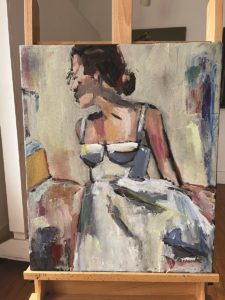
It wasn’t until his freshman year at the University of Vermont that Cardinal made his first painting. He ended up majoring in English and minoring in art. “It was more that I had to pick a minor and I went with art,” he admits. “I wouldn’t say my art courses really shaped anything.
“My only real painting class was with this professor…,” Cardinal says and then pauses, searching for words. “I’m an artist, but I’m not that well versed in labels and whatnot.”
He continues, describing his professor’s work: “He would paint a head and it would have eyeballs all over it. Surrealist?” Whatever it was, Cardinal says, “I didn’t connect with his teaching style, so I did my own thing.”
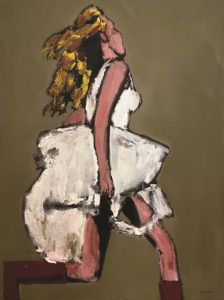
The “labels and whatnot” that Cardinal describes are a double-edged sword. While “isms” can be limiting, they can also be helpful in orienting the viewer. Looking at Cardinal’s free-spirited, colorful artwork, one might call it a blend of 19th-century and early 20th-century movements — Impressionism and Fauvism, specifically — with a healthy dose of mid-20th-century action painting, à la Pollock and his crowd.
His subjects are familiar and yet peculiar. While Cardinal’s marks on the canvas can be interpreted as a female figure, a boat, or a vase of flowers, they are just as much a record of the painter’s gestures and emotional state.
While Cardinal sometimes paints from life, he mostly begins by poring over hundreds of photographs — either from fashion magazines or ones his father has taken over the years. Sometimes, he’ll look at designers that he admires on Instagram.
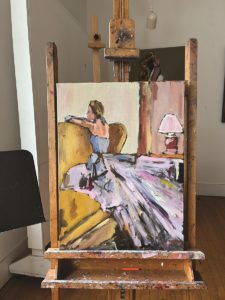
Fascinated with 1920s fashion, Cardinal looks for linear patterns and that special “something” — a subtlety or simplicity about the dresses, hats, and models. He’s drawn to facial profiles that are more straight lines than details. “If I choose the wrong image to start with, the painting will be a disaster,” he says.
Cardinal prepares his canvases with a dark acrylic ground, lets it dry, then paints in oil. “Sometimes I’ll outline the figure, but most times I just go for it,” he says. “I try not to use color straight out of the tube. A pink dress still has 20 subtle shades of pink.
“I work fast,” Cardinal continues. “I see what I want to paint, and I paint it. The fast pieces are the ones that work.”
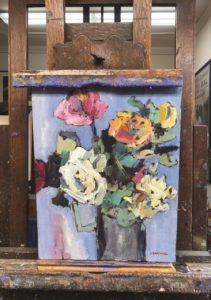
If Cardinal isn’t beholden to any “ism,” or to the teachings of a Surrealist professor, it’s because his loyalties lie firmly with the Provincetown artists who helped develop his personal style, starting with his father.
“I’ve learned a lot from him over the years,” Cardinal says. “He does his own thing. He’s taken a modernized approach to painting very simple landscapes, and that’s a tough thing to do.”
He also cites the influences of Anne and Cynthia Packard. “It’s the emotion and color of their work that I like,” he says. “They’re loose; they don’t have the desire to put in every window and chimney and that lets your imagination do the rest. That’s the kind of art I’m drawn to, personally.” Plus, they don’t paint eyeballs.



